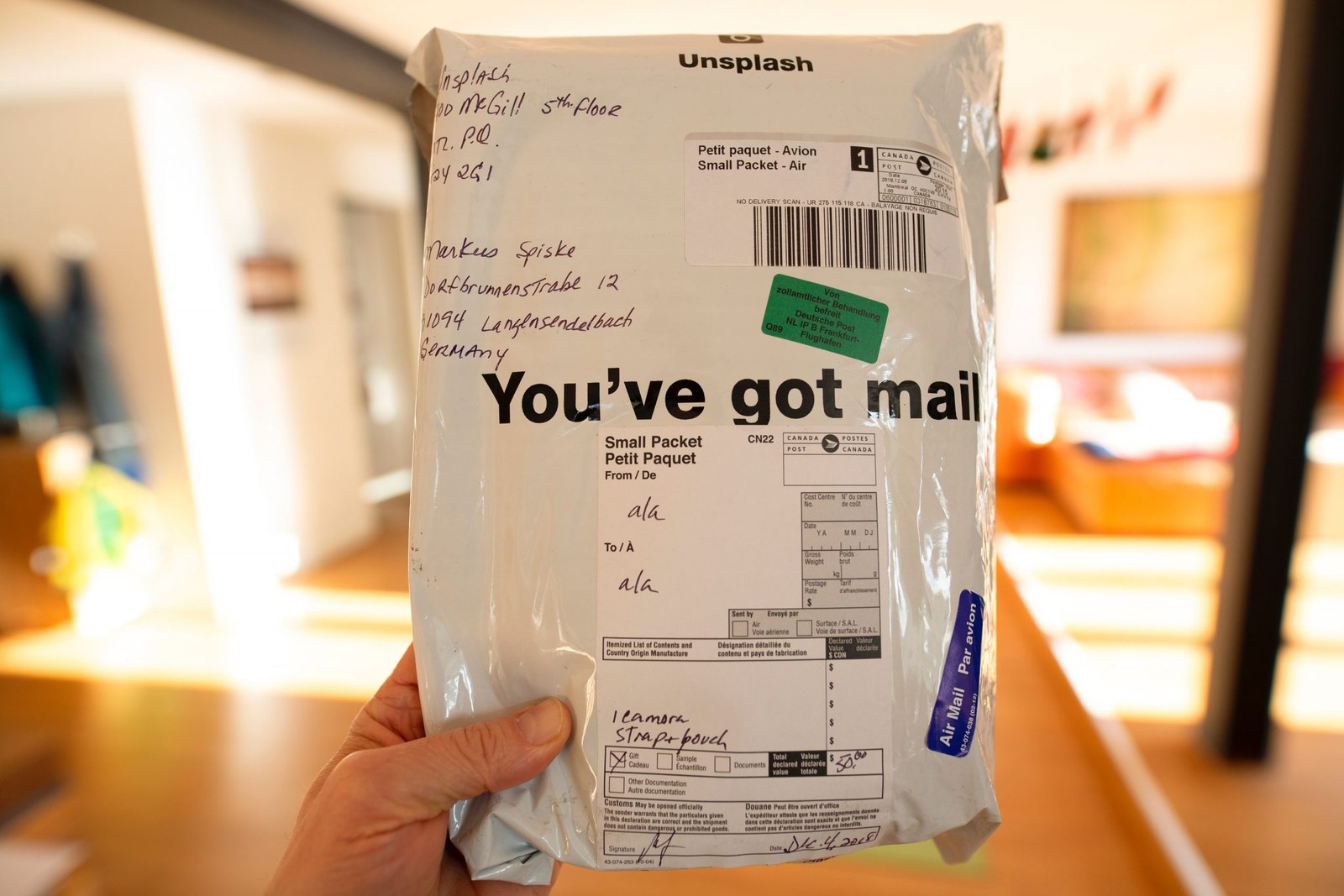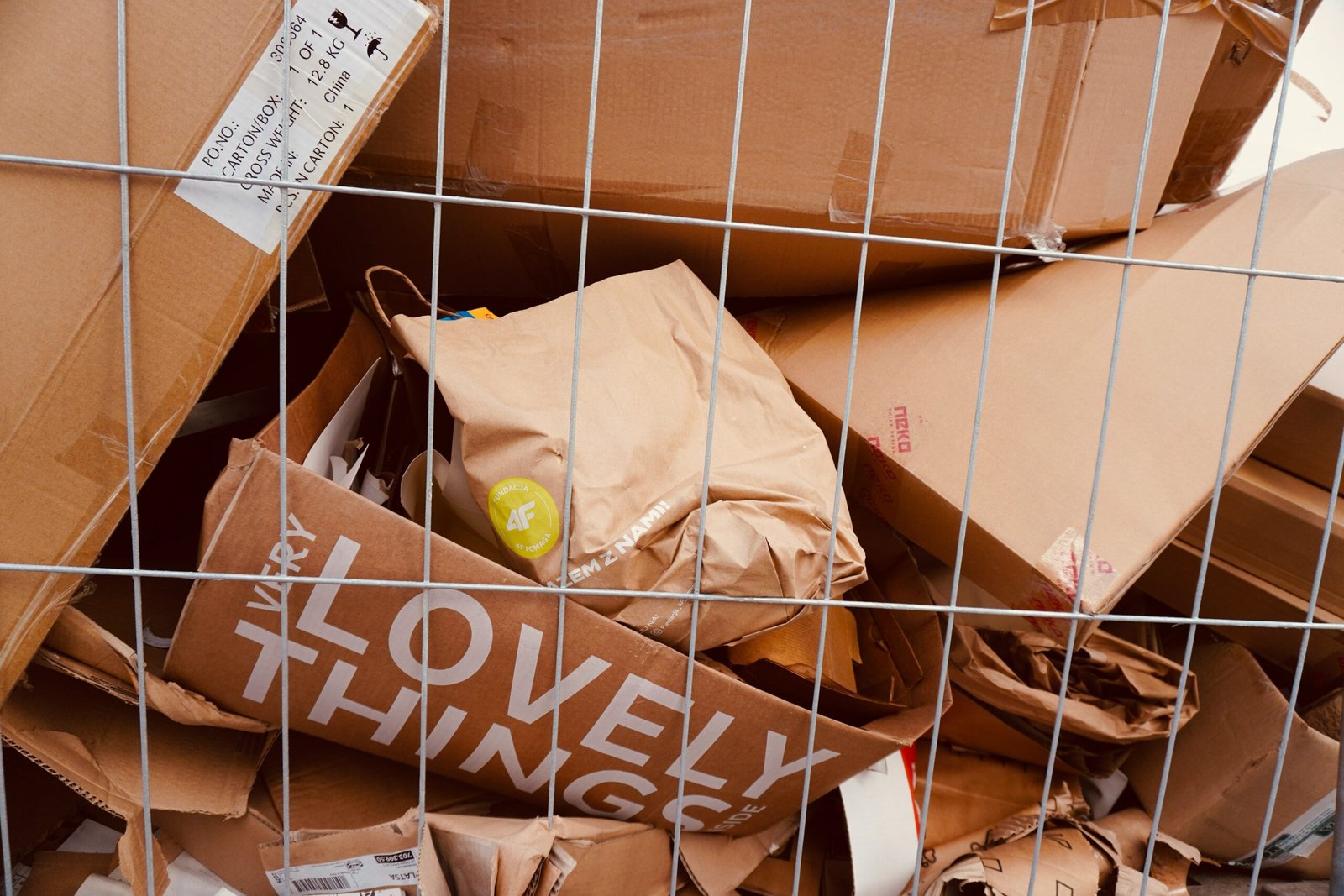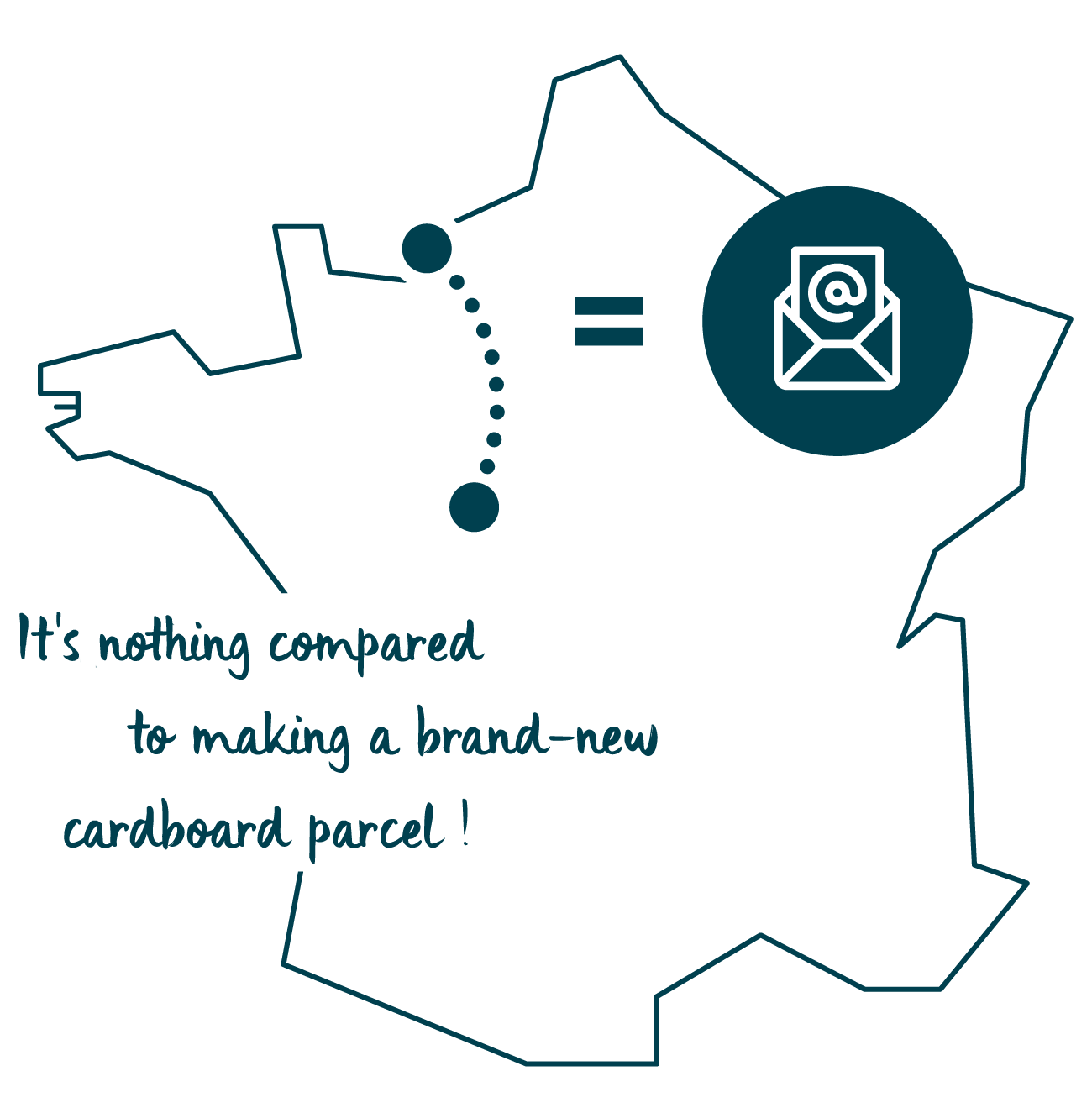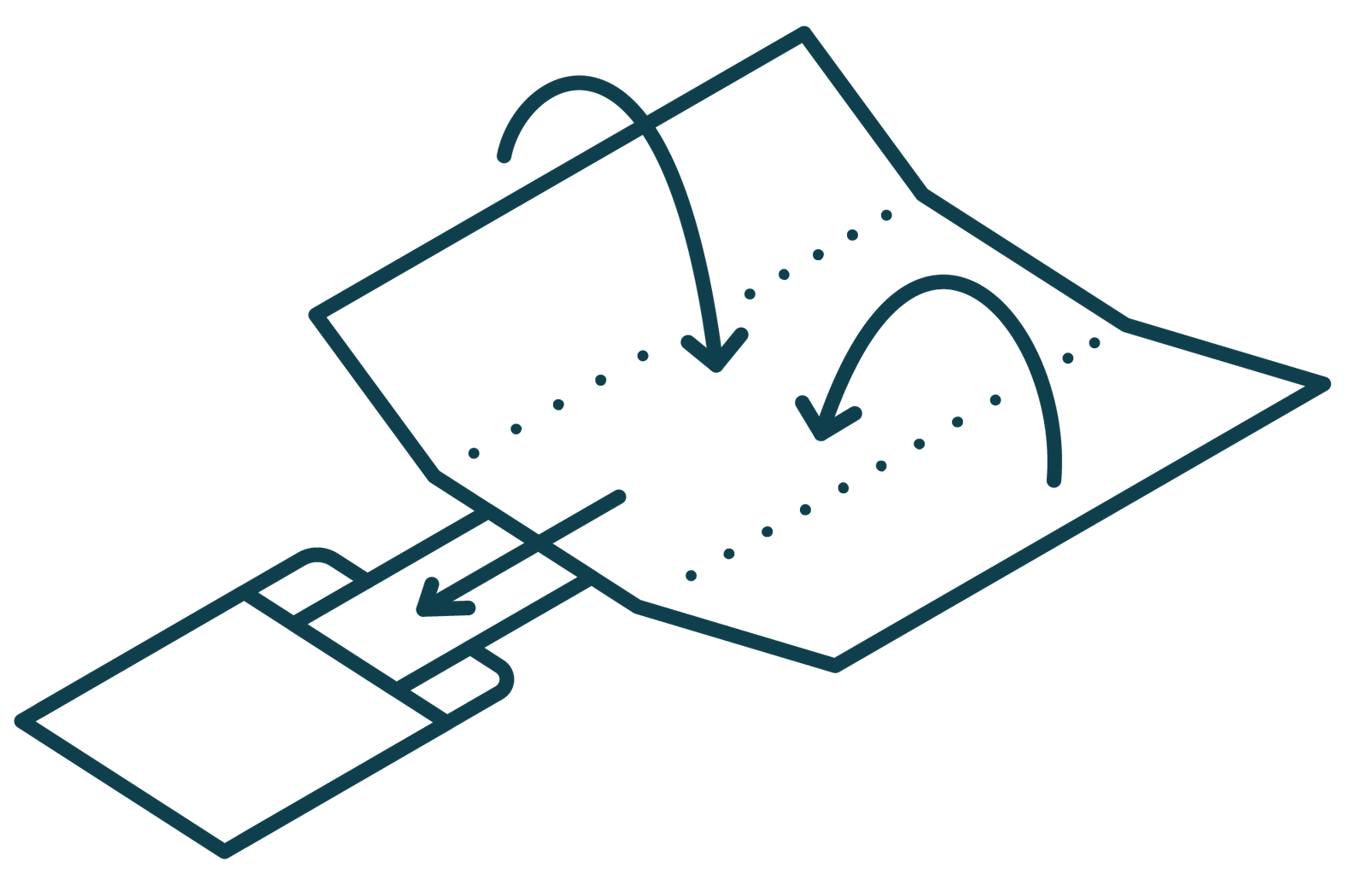E-commerce is a hit, but the waste generated isn’t !
For less waste in e-commerce, let’s think outside the box.


8.2 billion parcels are sent around Europe every year,


Used for an average of 3 days


And generate 1.5 billion tons of delivery waste


In and out
Single-use cardboard packaging and plastic bags are lucky if they are used twice or more. Most of the time, they are used just once and then discarded. To understand the environmental impacts, measure them and identify areas where we could act to reduce them, we asked Evea, a specialised firm, to carry out a life cycle analysis of our product and alternative solutions.
Oh, it can be recycled !
Only 4% of plastic packaging is recycled in France, according to Citeo (the French organisation responsible for sorting and recycling plastic). As for cardboard, the figures are better, even though 32% of cardboard packaging can still not be recycled in France.
Not to mention that recycling is not transparent: cardboard must be collected, transported, sorted, and recycled: a process that requires a lot of water and energy.


Let’s reuse
Hipli packaging has less impact than a cardboard parcel from the second use
100
uses
-25kg
of waste
-83%
footprint carbon
Measuring how many times it is reused
Our packages have been designed to make one hundred round trips. And we do everything we can to help them achieve this goal. Thanks to the QR Code present on each package, we can count the number of uses, whether they take place between individuals or if the packaging is returned to us.




The impact of sending packaging back
Hipli packages have a secret weapon to reduce their environmental impact: once folded, they are very small and light. The impact of returning through the mail is therefore much less than on the outward journey, in parcel mode.
It only generates 20g of CO2, 11 times less than the production of a new cardboard parcel.
All these figures come from data from Ademe, Citeo and a Life Cycle Analysis carried out by Evea. The full analysis is available here for those who want to understand all impacts.






